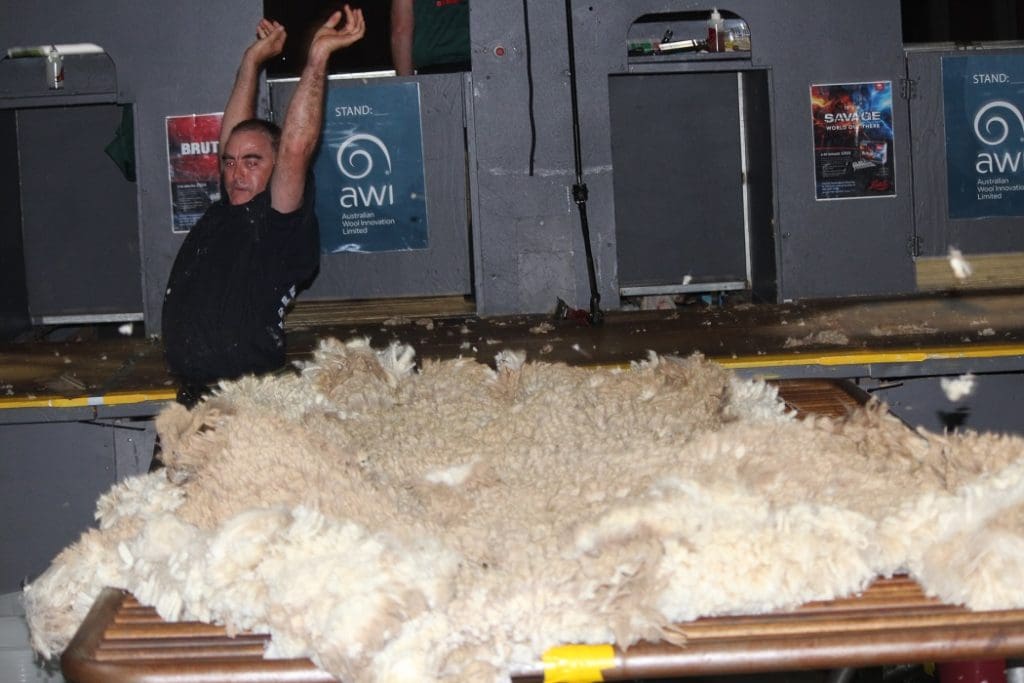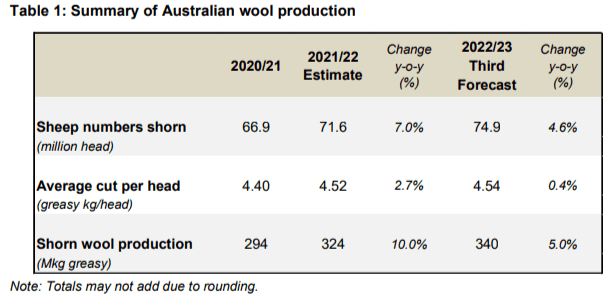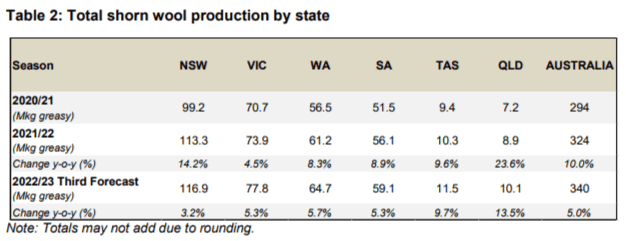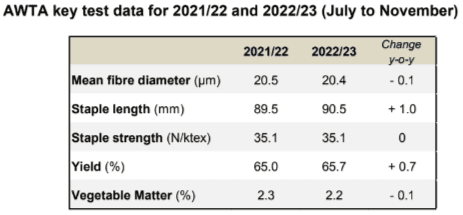
Mark Purcell throws another fleece on his way to victory in the open wool handling final at Bendigo.
AUSTRALIA’S expected wool production in 2022/23 has been held firm at 340 million greasy kilograms in the latest official industry forecast.
The Australian Wool Production Forecasting Committee’s 340Mkg forecast is the same as its previous estimate in September, up 5 percent on the 324Mkg estimate for 2021/22.
Shorn wool production is expected to increase across the states by between 3.2pc in New South Wales and up to 13.5pc in Queensland.
The number of sheep forecast to be shorn in 2022/23 is 74.9 million head and the average cut per head is forecast to increase slightly to 4.54 kg greasy.

Committee chairman, Stephen Hill said above average to highest on record rainfall deciles throughout most wool producing regions has produced abundant pasture feed contributing to a further rebuilding in the Australian sheep flock and high fleece weights.
“Australian flock numbers are forecast to increase by 4.6pc year-on-year, with the number of sheep shorn rising to 74.9 million head during 2022/23 – the highest since 2017/18,” he said.
“However, the season is not without its challenges.
“Continued wet conditions with lower average temperatures have negatively impacted pasture feed quality with many producers facing difficulties in accessing waterlogged or flooded paddocks to manage their sheep flocks and pasture,” he said.
“The wetter season has increased the hazard posed by internal and external sheep parasites which has negatively impacted on sheep production, especially younger sheep.”

However, the committee statement today said despite the challenging seasonal conditions, the October 2022 Sheep Producers Intentions Survey indicated that sheep producers are cautiously optimistic about the wool sector.
“However, their optimism is tempered by an expectation that accessing labour would become more difficult and input costs will rise over the upcoming 12 months.
“The climate conditions are also distorting shearing patterns, wool receivals and AWTA test figures,” the committee said.
 The committee said the large number of rainy days during Spring and early Summer has delayed shearing due to wet sheep and difficulties in keeping sufficient dry sheep for shearing to continue. Delays are also occurring in logistics between the farm-gate and broker stores resulting in AWTA test volumes being lower than expected in the first half of the season.
The committee said the large number of rainy days during Spring and early Summer has delayed shearing due to wet sheep and difficulties in keeping sufficient dry sheep for shearing to continue. Delays are also occurring in logistics between the farm-gate and broker stores resulting in AWTA test volumes being lower than expected in the first half of the season.
The committee said July to November 2022 AWTA key test data indicates wool quality is very similar to last season, although vegetable matter content is expected to increase as the season progresses.
Source: AWI.

HAVE YOUR SAY